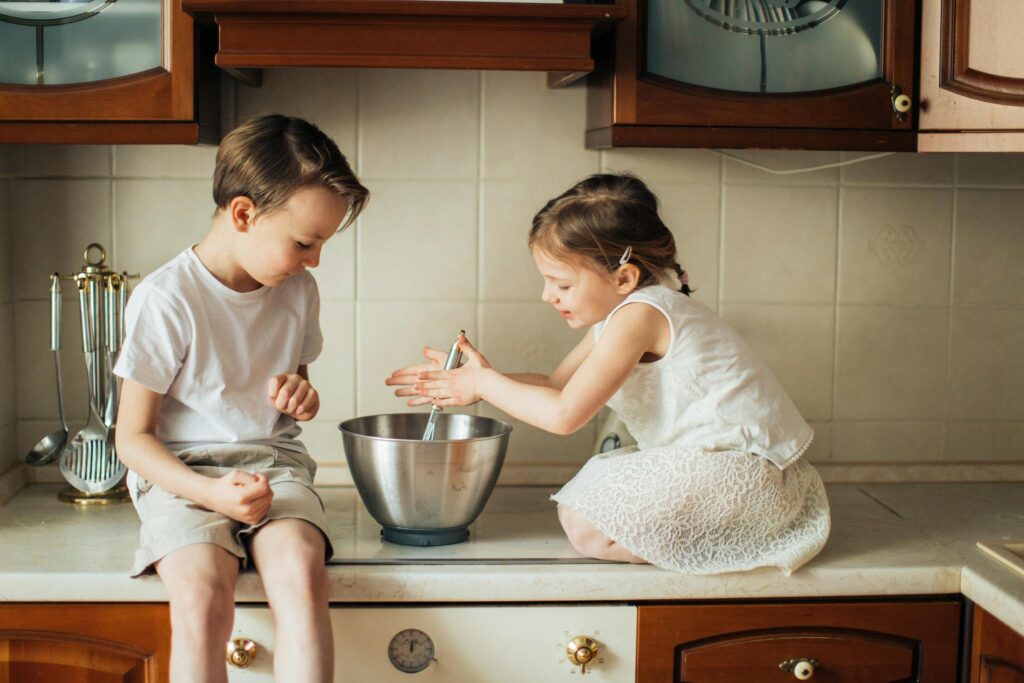In this article, we explore the intersection of homeschooling and gender in the classroom, offering insights and tips for creating a supportive and balanced educational experience for every learner.
Homeschooling provides a unique opportunity to tailor education to individual needs, including addressing considerations related to gender in the learning environment. Unlike traditional settings, homeschooling allows parents to create a classroom experience that fosters inclusivity, equity, and respect for gender differences.

Understanding the role of gender in the classroom can enhance teaching strategies and help nurture confidence and self-expression in students.
Note: terms referenced in this article are taken as the following;
- Gender we refer to as boys and girls.
- The classroom can be either in-person or online.
How men and women influenced history.
Amazon Tools for History and Gender Roles
This blog contains affiliate links to highlighted websites and/or resources. By clicking on the link and making a purchase we may earn a small commission at no extra cost to you. Click here for full disclosure.
Here are three Amazon tools/resources for kids to explore history and gender concepts in a homeschooling-based classroom:
“Who Was/Is Series” Books
- These biography books from the Who Was/Is Series are perfect for introducing children to historical figures, movements, and pivotal time periods. Many of these books include topics related to gender equality, influential women in history, and cultural changes, providing accessible and age-appropriate lessons on history and gender.
- Examples include:
- They are engaging, easy to read, and make history relatable for children.
Time for Kids History and Social Studies Activity Kits
Amazon offers Time for Kids History Kits designed to explore U.S. history and key historical movements through interactive activities. These kits often connect historical concepts like gender roles and equality with hands-on learning, making them perfect for homeschooling. They include timelines, quizzes, crafts, and historical explorations.
Historical Dress-Up & Role-Playing Costumes
History-based role-playing is a fantastic way for students to learn about gender roles and historical eras in an interactive manner. Amazon offers historical dress-up sets like:
- Colonial America costumes
- Victorian-era dresses
- Civil Rights Movement-themed role-playing kits
These tools allow children to immerse themselves in history by engaging in role-playing, exploring daily life, and understanding gender roles across different periods in history through hands-on experience.
Journal Writing and Gender in the Homeschool Classroom
Journal writing is a powerful tool for exploring and understanding concepts of gender in the homeschool classroom. It provides students with a safe, reflective space to express their thoughts, experiences, and perspectives related to gender identity, roles, and history.

Through journaling, students can connect personal experiences with lessons on gender equality, historical movements, and societal expectations, fostering critical thinking and self-awareness. Homeschool educators can incorporate journal prompts that encourage students to explore questions such as “What does gender mean to me?” or “How have gender roles changed throughout history?”
This practice not only strengthens literacy skills but also promotes empathy, inclusivity, and a deeper understanding of gender’s role in shaping personal and societal identities.
Homeschooling and Gender in the Classroom
Prior to middle school, generally there is not much difference between the genders in terms of how they interact in the classroom.
Once students reach university level, again there is not much difference in how they interact in the classroom.
Therefore, this article will focus on the ages of students between middle school and high school where understanding differences may bring the most benefits to teaching and learning.
Check out this video highlighting everything mentioned in this article.
The Design of the Schools
Generally speaking, girls tend to mature faster than boys, and it is perhaps why the design of the school system seems to favor girls over boys.

Schools are generally designed to have students sit for long periods (generally 40 minutes) of time in order for teachers to teach. They also expect certain forms of communication and behaviors both inside and outside the classroom.
What Differences in Gender Can Help with Learning?
In this article, we look at addressing three main differences; sitting in the classroom, ways of communication, and the general ways boys and girls behave in the classroom.
I. Sitting in the Classroom
It takes a great sense of maturity to remain sitting still for long periods of times, and so with mixed gender classrooms, boys are often seen as the “immature” ones, or always seeking attention, because they just can’t seem to sit as still as the girls do in the classroom.
Depending on the teacher’s discipline strategy then, boys may be made to feel ashamed for wanting to move around during the class time.
If the teacher takes the approach to note how well the girls are “listening” and how the boys seem not to be “listening” as well for always wanting to move around, then two things may happen when it comes to behavior.
The boys may completely withdraw and not participate, or they may begin to rebel and cause further problems in the classroom.
Therefore, it is important that teachers, not treat boys with the same expectations as they do with girls.
When teachers are aware of the need for boys to move around during class, they will not see the boys as causing problems but respond in the appropriate manner.
Teachers therefore, need to be aware that in structuring a lesson, students must be given the opportunity to move around during the lesson as to meet the needs of both genders and avoid behavior issues.
Visit our article on lesson planning to see how to structure the class to allow for some independent time where students can be free to move around, while getting their work done.
Now moving around in the online classroom can mean something different. It can refer to allowing students time to do stretching exercises.
It also means allowing the students to work in “breakout rooms” so that they can feel free to communicate in their own ways.
II. Communication in the Classroom
Note: the observations made in this article as to the differences in gender is meant to give a general representation of boys and girls.
The differences in the gender when it comes to communication is simple. Boys tend to prefer short, direct communication when it comes to answering or asking questions.
On the other hand, girls prefer to elaborate as they tend to enjoy the experience of communicating.
In understanding the nature of communication styles between boys and girls, teachers can better structure their questions in a manner that showcase the strengthens in responses between girls and boys.
In using assessments to check for understanding, teachers should assess for understanding in ways that allow for freedom of expression, whether it be long or short.
So long as the main objectives of the lesson are being understood or met, it doesn’t matter the length of the response.
Therefore, it is important that teachers, not expect the same communication style from boys as they do with girls.
III. Behavior in the Classroom
When it comes to behavior, it goes without saying that students must be on their best behavior to get the most out of learning.
Students must work together to make the learning environment safe and open to making mistakes and learning from these mistakes.
The classroom must have its own culture rather than defer to society’s culture norms as to how boys and girls should behave. It is one where the behavior of the individual is recognized over that of being a boy or girl.

It is to be understood that when you are communicating in the classroom, we are all seen as individuals and are to be treated with respect and common polite words.
Therefore, it is important that students recognize the value of building behavior skills as individuals looking to find success in society.
Click here to read more about behavior strategies in the classroom.
Students who do not follow classroom rules can be disciplined by having them reflect on their behavior and the negative impact it can bring to themselves and those around them.
Visit our article on discipline in the classroom and how to deal with behavior issues in the classroom.
The Benefits Gender Differences Bring To Learning
Failing to recognize the value boys and girls bring to the classroom as boys and girls, and as individuals can cause serious problems to teaching and learning.
When boys and girls seem themselves as being appreciated for who they are, and the value they can add to the classroom is being appreciated, they will then become more attentive and active members of the classroom.
They will add benefits to the discussion and improve their learning.

Teachers will find it easier to communicate with the students and appreciate how responsive they will become to all the teacher asks them to do. This also works to help build solid relationships between teachers and students.
Lessons will be met with high levels of enthusiasm and students will find it easier to communicate all they have learned during the lesson. and in being able to show what they have learned in being given the opportunity to demonstrate it to others.
They will then in be able to show what they have learned when given the opportunity to demonstrate it to others.
Related Topics
Connect to our other pages as you navigate through our website. Explore what these pages have to offer you and you will be glad you did!
- 5 Classroom Management Strategies for Homeschooling
- How to Use Formative Assessments in the Homeschool Classroom
- 7 Tips for Homeschool Lesson Planning
- 5 Important Tips for New Homeschooling Teachers
- The Influence of Parents on Education Policy
- 5 Ways to Stay Organized with Homeschooling
- 7 Ways to Connect Social Emotional Learning and Homeschooling
Join Our Newsletter Community Today!

Final Thoughts…
They say that as presenters of truths, or in other words, as teachers or as comedians, it is important to know your audience.
In knowing your audience you will be able know when it is the best time to present, and how best to present the material, and what kind of response it may bring.
When teachers know the behavior of their students in the class both as individuals and in how nature is involved with boys and girls when it comes to movement and communication, then they can co-ordinate their teaching strategies to help build confidence and enthusiasm when it comes to learning.
For more on teachers and teaching strategies from EduKitchen – Recipes for Learning, click here.
Share Your Thoughts
Leave us a comment below, share your thoughts on this article, and let us know whether you agree with our thoughts on gender differences in the classroom?



